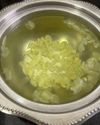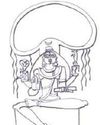
This time I would like to take the opportunity to talk about how to practise the Chinese art of tea as a yoga Sadhana. Like the Japanese tea ceremony, many participants regard it as a performance rather than Sadhana. The situation is similar to modern yoga practice where many people consider yoga as a way to promote physical and mental well-being instead of self-realization.
In the Japanese tea ceremony students learn to walk, sit and prepare tea. These steps would transform his/her personality as what would happen in hatha yoga. On the contrary, students of the Chinese art of tea learn about self-discipline and personal qualities from the very beginning before embarking on the sequence of preparing tea. This situation is similar to the Raja yoga of Patanjali in which the Yama and Niyama serve as the foundation of the Yogic path.
This story is from the November 2019 edition of Yoga and Total Health.
Start your 7-day Magzter GOLD free trial to access thousands of curated premium stories, and 9,000+ magazines and newspapers.
Already a subscriber ? Sign In
This story is from the November 2019 edition of Yoga and Total Health.
Start your 7-day Magzter GOLD free trial to access thousands of curated premium stories, and 9,000+ magazines and newspapers.
Already a subscriber? Sign In

Moringa Flowers
Edible flowers? Yes! Ayurveda mentions many edible flowers. One of them is the Moringa flower.

You Gain Some, You Lose Some
Recently, we the Chennaites, got the opportunity to get blessings from His Sharada Peetam.

A Healthy Body
An incident from Swami Vivekananda's Life

A Man Himself is Responsible for His Deeds
Renouncing doer-ship

The Unstructured Drama of Life
Go for the silent roles

Positive Thinking and Meditation
A life-raft for seniors

Soul Connects
The Yoga Institute’s Reach Out Camp

The Wood Wide Web
As a kid, Suzanne Simard grew up in the rainforests of British Columbia and she normally spent her summers visiting forests around and exploring them along with her family, which included a curious dog named Jiggs.

More About Dharma and Duty
Considering One's Own Background (Part 2)

Devaluing Your Value
The lure of more